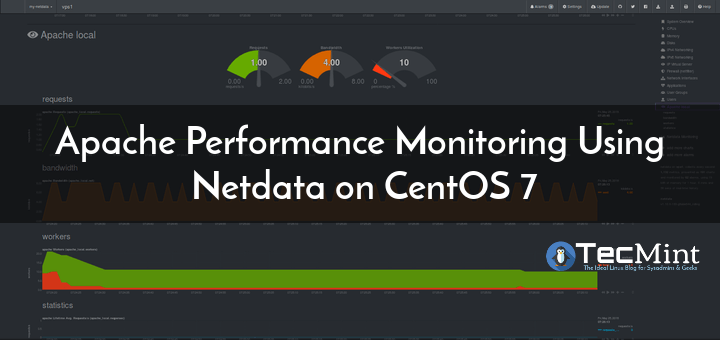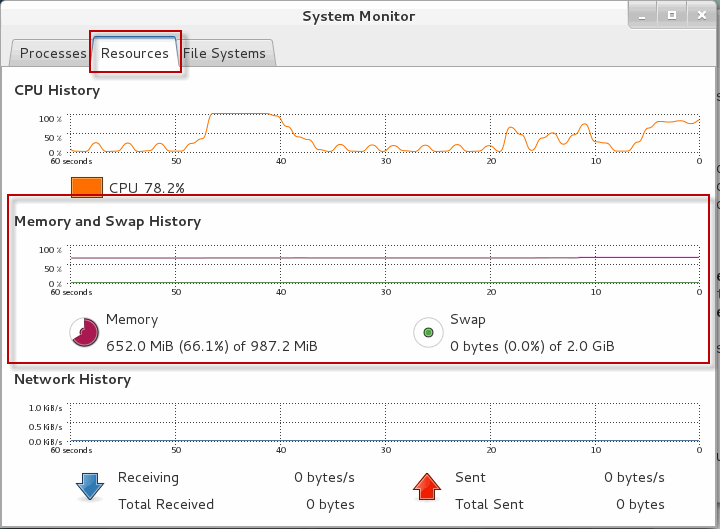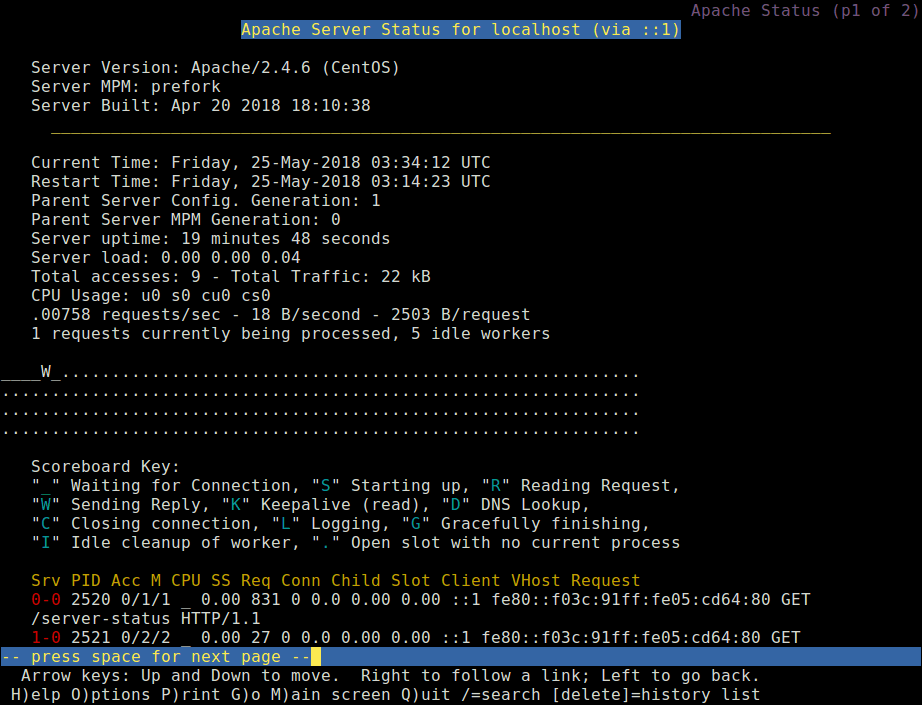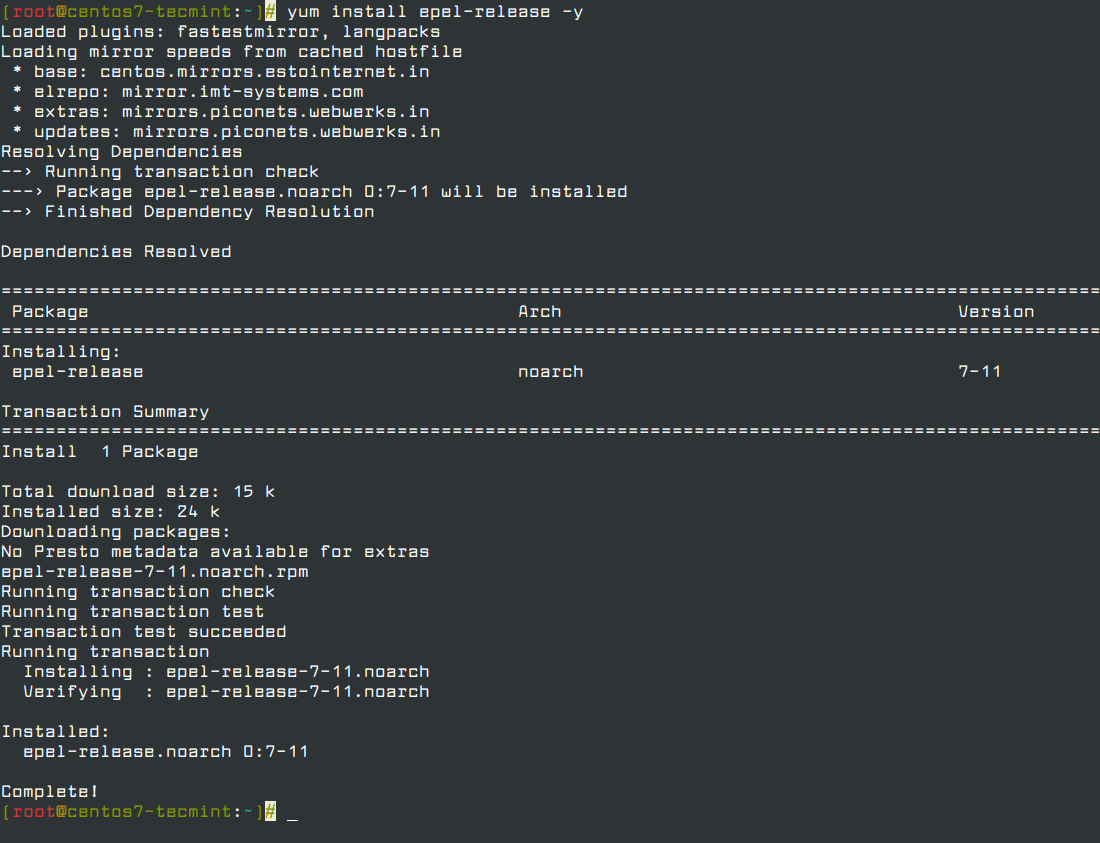centos 7 how to check performance
A troubleshooting performance related issue in the IT world is always challenging and if you were not aware of the right tools then it would be frustrating. Tuned-adm profile test-performance Latency-performance for CentOS 7 Profile for low latency performance tuning.

How To Monitor Apache Performance Using Netdata On Centos 7
Sometimes MySQL face performance limitations if not properly tuned and optimized.

. Sudo tuned-adm active Current active profile. To get stats on the top processes that are running on your system click t. This can be a quick and easy way to check the overall performance of the database server.
The simplest way to check for the CentOS version number is to execute the cat etccentos-release command. We can also use the dd command to measure server latency. Previous versions of CentOSRedHat Linux use init scripts located in the etcrcdinit directory to start and stop services.
Sudo mysqlslap --usersysadmin --password --hostlocalhost --auto-generate-sql --verbose. Use the dd command to measure server throughput write speed. There are several ways on how to check what version of CentOS is running on your system.
The tuned-adm profile command is used to switch the active profile to a different one. If you want to collect some statistics on CPU performance click c. Do you have any idea how to check the performance of HPC cluster having mpich on top of centos 62.
If you are working as a support in a production environment then most probably you will need to deal with performance-related issues in the Linux environment. There are many toolsutilities that can be used to analyze the current system performance. Rootcentos63 hdparm -tT devsda devsda.
Using the sar tool you will be able to look back over a period of time and see how the server has been running. Service units have a service extension. Hello Everybody I have few queries.
You will see the. Example on how to check disk Disk Read Write Speed for devsda on CentOS63. CentOS 8 and CentOS 7.
How to check CentOS version step by step instructions. How can I check for the GPU card on CentOS. CentOS-7 is now powered by version 3100 of the Linux kernel with advanced support for Linux Containers and XFS is a high-performance 64-bit journaling file system as the default file system.
CentOS 7 view system processes using the system monitor tool. Disables power-saving mechanisms. Its also the first version of CentOS to include the systemd management engine the firewalld dynamic firewall system and the GRUB2 boot loader.
4128 MB in 200 seconds 206562 MBsec Timing buffered disk reads. But how do we gauge the historic system performance. Sudo yum update sudo yum install epel-release 2.
For that you can use the System Activity Report SAR tool. Dd ifdevzero oftmptest2img bs512 count1000 oflagdsync. You will see the following output.
276 MB in 306 seconds 9030 MBsec. If we run this command below its shows all 40 lines of CPU running consistent at 1200 some of which changes real time when needed from 1200 to 1300 or 1500 or even 3100 like when I launch another application. This application is heavily optimised for its use case handles zillions of short-lived tcp requests fast.
We illustrate how to tune MySQL 80 to enable it operate at top speed and with stable and consistent performance on Centos 7. This profile is the Parent profile to network-latency. A command prompt Ctrl-Alt-T in Ubuntu Menu Applications Utilities Terminal in CentOS optional A package installer like apt or yum usually included by default Note.
Rootcentos7-box lscpu grep -i socket s CentOS Linux determine number of CPU sockets on my server or desktop. OR use the lscpu command. This example will tune our system for maximum throughput.
Now we will discuss how to use yum to accomplish the same task. Dd ifdevzero oftmptest1img bs1G count1 oflagdsync. I intend to use the GPU as a GPGPU on that machine but first I need to check if it even has one.
Most of our operations complete quickly. Use the grep command along with wc command and sort command as follows. Use one of 5 available commands in Linux to check memory usage.
Using rpm is not the only way to check for installed packages on your system. Identifying the accurate CentOS version may be required to help you or your support team to troubleshoot. Use the systemctl command as follows to list all loaded service units.
Try the following command. RHEL 8 and RHEL 7. And note that Im not the administrator of the machine and I only use it remotely from command line.
Using Yum to Check Installed Packages. Mpm_prefork_module is included and enabled in the default Apache installation on CentOS 7. You will see the following output.
Sudo watch -n 1 cat sysdevicessystemcpucpucpufreqcpuinfo_cur_freq. CPU governor is set to performance and locked to the low C states by PM QoS. To get the network stats of your Linux system click n.
Yum list installed You will see that the list yum provides is formatted slightly differently. Check CPU By Processor. Before we dive into the installation of Netdata a few prerequisite packages are mandatory.
You can make Apache performance better using the Apache MPM prefork module. Solving Poor Network Performance on RHEL and CentOS 7. Are there any standard programs like FFT graphics rendering etc to check the performance of mpi cluster with single node and multiple nodes.
Rootcentos7-box grep physicalid proccpuinfo sort -u wc -l. This tool is similar with the Task Manager in the windows operating system. CPU energy performance bias to performance.
We are building the next generation online marketplace and part of it is a real-time Java application. To confirm this run the following command. Sudo apachectl -t -D DUMP_MODULES grep mpm You should see mpm_prefork_module shared if mod_deflate is installed and enabled.
It works fine on Ubuntu but when I try to use the same on CentOS it says lspci command is not found. To start system monitor tool click Application - system tools - system monitor then system will pop-up a system monitor window. But first update the system and install the EPEL repository as shown.
We start by testing a single client connection doing one iteration of an auto-generated SQL. In CentOSRHEL 7 these init scripts have been replaced with systemd service units. How to Install Netdata in CentOS Linux.
Sudo tuned-adm profile throughput-performance. The dd command is useful to find out simple sequential IO performance. Lets look at an entry in depth.
See also How to Remove Volume Group and Physical Volume on LVM.

Centos 7 Rhel7 2 Linux Commands To Check Memory Usage Osetc Tech

The Mega Guide To Harden And Secure Centos 7 Part 1 Security Tips Exam Study Security

How To Install Gnome Gui On Centos 7 Installation Desktop Support Gnome Desktop

How To Monitor Apache Performance Using Netdata On Centos 7

How To Install Chromium On Centos 7 Linux Mint Linux Chromium

Install Matomo On Centos 8 Key Performance Indicators Web Analytics Installation

Check Mk Is A Free Open Source It Infrastructure Monitoring Tool It S Actually Nagios Plugins Which Enhances Their Capab Configuration Detection Installation

How To Optimize And Repair Windows 10 With Performance Monitor Fast And Optimization Repair Monitor

Belum ada Komentar untuk "centos 7 how to check performance"
Posting Komentar